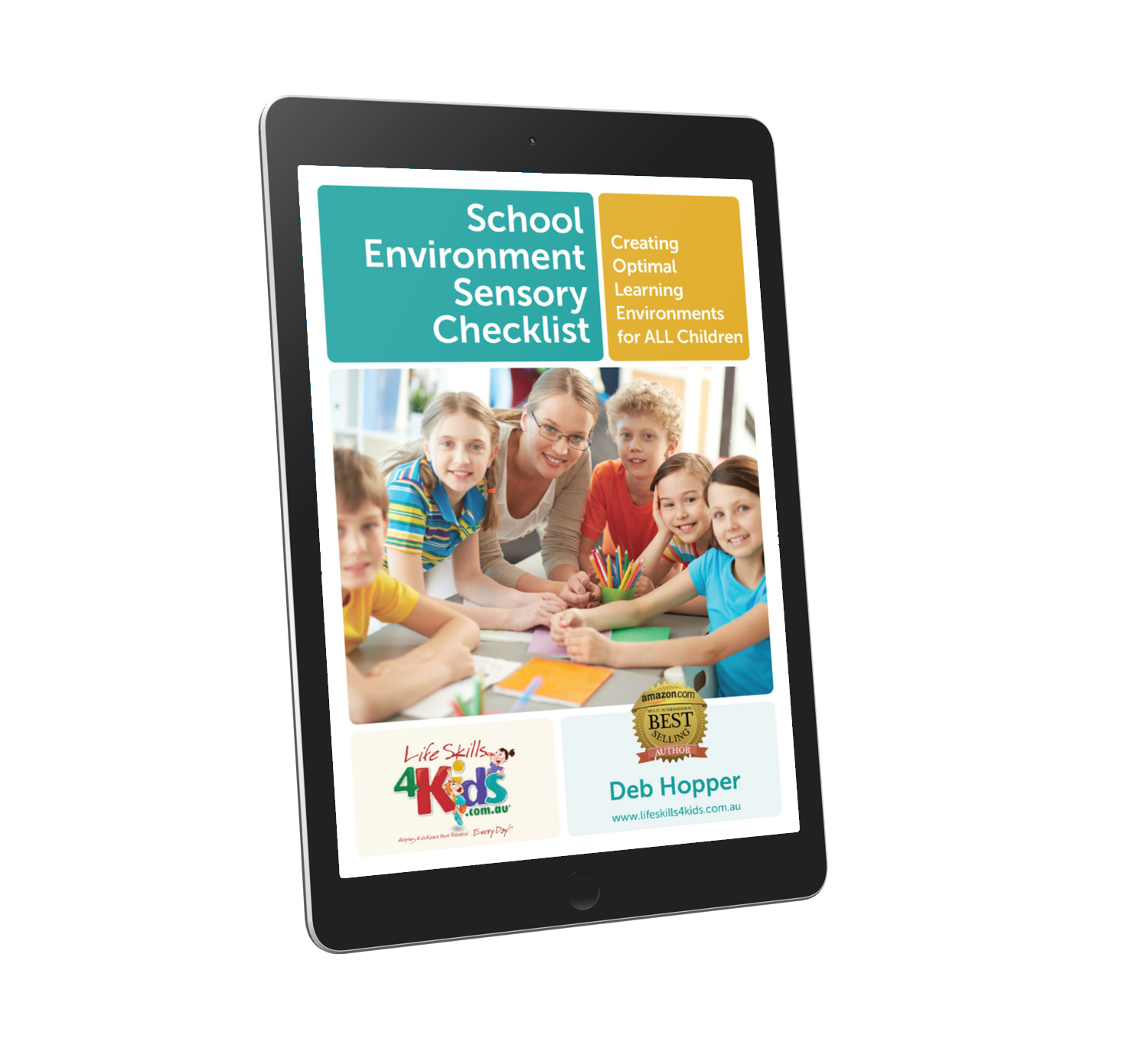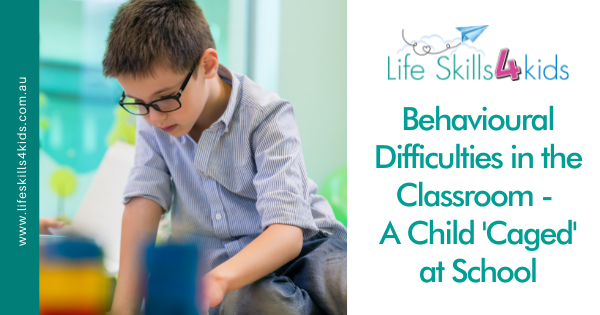Today’s national papers in Australia share the story of a child allegedly “caged’ in school in two separate incidences, one in Canberra and one in Newcastle.
Working with children with a variety of diagnoses including autism spectrum, ADHD, schizophrenia, anxiety and other developmental difficulties can be extremely challenging for teaching staff as well as parents. I must say that the parents and teaching staff I have worked with are amazing in their patience and commitment in deal ing with often very challenging behavioural difficulties.
ing with often very challenging behavioural difficulties.
As an Occupational Therapist working daily clinically with children with mild to severe behavioural difficulties in preschool, primary and high schools, as well as presenting workshops on the topic, I would like to make some comments on this issue that the above articles have raised.
Often ‘behavioural difficulties’ are actually underpinned by a child physiologically reacting to sensory information that is too overwhelming to their sensory systems. As Occupational therapists, we are trained to focus on understanding the ‘sensory building blocks’ and the underlying reason why children may be reacting in different environments. For example, classrooms can be very challenging environments for our sensory processing systems. Noise of kids talking in class and on the playground can be too overwhelming. Visually there are many distractions, the flickering of fluorescent lights might be too overwhelming, the glare of light through the window might be too much to handle and the visual busy-ness of the classroom environment displaying children’s work can be overwhelming. From a touch perspective, many children struggle with dealing with accidental bumping while in line with other students, or they may find it difficult to interact with paints or glue as they don’t like the feeling of this on their hands.
Whenever a child is impacted and overwhelmed by their environment, they are placed in a stress ‘fight or flight’ response. This can result in “behavioural” difficulties. This “behaviour” might be seen as different reactions to their stress. They may react with aggressive behaviour, verbal outbursts, or their body may go into emotional and physical shut down, where they withdraw and may retreat under the table, into a corner or need time away.
- When “difficult behaviour” that is actually a sensory response is treated with behavioural strategies and interventions, often the result is escalating behaviour.
- When the “difficult behaviours” are from a sensory response, especially sensory overload, understanding a child’s sensory needs and a sensory-based intervention is needed and is often more effective.
The articles above refer to the use of restrain and isolation. I cannot comment on the particular issue and environmental setup mentioned in these articles as I am not aware of this particular situation.
However, in best practice, some schools and classrooms have developed “sensory safe” areas both inside the classrooms and in separate rooms where children can choose to go to if they are feeling overwhelmed. These sensory-safe areas are not areas of restraint, but are safe areas that include sensory supports such as bean bags, ipods with calming music, weighted lap pads, fidget toys and visually relaxing toys such as oil timers, sand timers, or lava lamps. These environments support the child’s sensory systems in a non-restrained yet sensory safe environment, and can help children be able to calm and re-group if the classroom is getting difficult to tolerate.
A study published in 2014 in the journal Neuron shows how movement can impact other sensory processing areas. “This growing body of evidence is extremely exciting, and has direct practical considerations for helping children who have Sensory Processing Disorder (SPD), and who struggle to concentrate in class, or can’t handle noise or other visual impacts in busy school environments,” reports Deb Hopper. “This research adds to ground breaking research in 2013 that has found links between sensory processing deficits and specific areas of the brain. By supporting children’s sensory systems, we can help them focus and concentrate in the classroom. When we support children’s nervous systems, they are able to take in information, and actually access the curriculum and learn. This is what so many children struggle with.”
In some schools, there is a need for further education of teachers and support staff to understand sensory processing difficulties, classroom strategies and creating sensory safe environments for supporting students. The “Just Right Kids” workshop teaches sensory-based strategies and interventions to parents, teachers, support staff and health professionals.
School Environment Sensory Checklist (eBook)
Do you have children in your class who struggle with autism, learning difficulties or reduced concentration? Then the School Environment Sensory Checklist (SESC) is your entry into transforming your classroom!
Quickly and easily evaluate your classroom from a sensory perspective to enhance learning needs of all children, including children with autism and learning difficulties.
Have less distracted children who listen for longer and enjoy times of focused learning and easier transitions. Whether you are a newly qualified teacher or have many years experience, the School Environment Sensory Checklist (SESC) will refresh your vision for your classroom!


